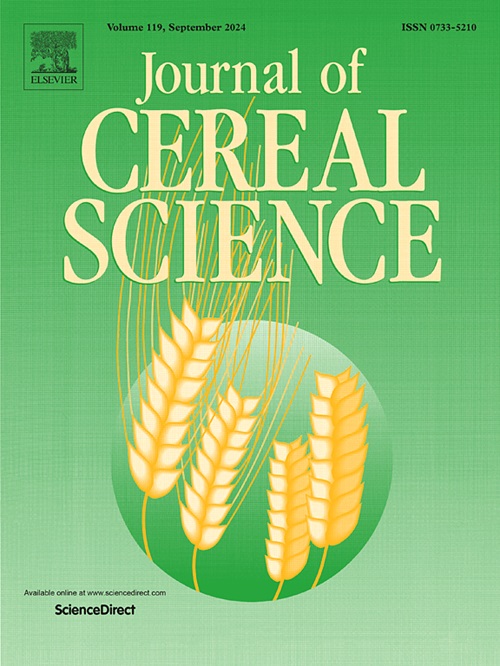Exploring the flavor characteristics and key flavor-related metabolic pathways in sour congee of different foxtail millet varieties
IF 3.7
2区 农林科学
Q2 FOOD SCIENCE & TECHNOLOGY
引用次数: 0
Abstract
Sour congee is a traditional non-alcoholic fermented grain food in China; however, the flavor diversity in sour congee of different foxtail millet varieties and key flavor-related metabolic pathways have yet to be thoroughly evaluated. This study analyzed the physicochemical properties, taste components, and aroma compounds of six millet varieties used in sour congee production. Results showed that flavor differences arose from compound concentrations rather than types. Succinic and citric acids emerged as primary taste-active compounds (TAV >1), while 15 volatiles contributed aromas (OAV >1), mainly fruity, green, floral, and fatty notes. The aroma of glutinous varieties and japonica varieties can be visually distinguished by the odor ring charts. Further chemometric analysis revealed six signature aroma compounds that distinguish the different varieties of sour congee (OAV >1 and VIP >1), including phenylacetaldehyde, (E)-2-octen-1-ol, 1-octanol, hexanoic acid, ethyl butyrate, and 3-octanone. The reconstructed key flavor-related metabolic pathways elucidated that these key flavor compounds are primarily generated from pyruvate, fatty acids, and phenylalanine metabolism. In summary, this study highlighted flavor characteristic variations and potential mechanisms underlying flavor substance formation. It was found that JM-fermented congee was conducive to attaining a desirable balance of flavor and antioxidant benefits.

探讨不同谷子品种酸粥风味特征及关键风味代谢途径
酸粥是中国传统的无酒精发酵粮食食品;然而,不同谷子品种酸粥的风味多样性和关键的风味代谢途径尚未得到充分的评价。本研究分析了6种用于酸粥生产的谷子的理化性质、风味成分和香气成分。结果表明,风味差异是由化合物浓度而不是类型引起的。琥珀酸和柠檬酸是主要的味觉活性化合物(TAV >1),而15种挥发物贡献了香气(OAV >1),主要是水果味、绿色味、花香和脂肪味。利用气味环图可以直观地区分糯稻品种和粳稻品种的香气。进一步的化学计量学分析发现了区分不同酸粥品种的六种特征香气化合物(OAV >;1和VIP >;1),包括苯乙醛、(E)-2-辛烯-1-醇、1-辛醇、己酸、丁酸乙酯和3-辛酮。重建的关键风味相关代谢途径表明,这些关键风味化合物主要由丙酮酸、脂肪酸和苯丙氨酸代谢产生。总之,本研究突出了风味特征变化和风味物质形成的潜在机制。研究发现,jm发酵粥有利于达到风味和抗氧化效果的理想平衡。
本文章由计算机程序翻译,如有差异,请以英文原文为准。
求助全文
约1分钟内获得全文
求助全文
来源期刊

Journal of Cereal Science
工程技术-食品科技
CiteScore
7.80
自引率
2.60%
发文量
163
审稿时长
38 days
期刊介绍:
The Journal of Cereal Science was established in 1983 to provide an International forum for the publication of original research papers of high standing covering all aspects of cereal science related to the functional and nutritional quality of cereal grains (true cereals - members of the Poaceae family and starchy pseudocereals - members of the Amaranthaceae, Chenopodiaceae and Polygonaceae families) and their products, in relation to the cereals used. The journal also publishes concise and critical review articles appraising the status and future directions of specific areas of cereal science and short communications that present news of important advances in research. The journal aims at topicality and at providing comprehensive coverage of progress in the field.
 求助内容:
求助内容: 应助结果提醒方式:
应助结果提醒方式:


